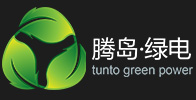how solar panels can power your home
by:Tunto
2020-03-26
Home solar panels and solar power kits have a variety of power supplies.
These systems can meet the needs of families, needs and spaces of almost any size.
In this article, we will discuss three different types of photovoltaic (PV)
Advantages and disadvantages of the system and their respective. Off-
These systems are usually located in very remote locations where the source of electricity and fuel is difficult to find.
These systems include: * solar panel arrays: a combination of solar panels based on the size of the power consumption in the cabin.
The higher the electricity consumption, the larger the array must be, and the higher the cost.
* Charging controller: This takes energy from the solar cell array and inputs it into the battery pack while ensuring that the battery does not overchargecharged (
Will damage the battery).
* Battery pack: this is specifically designed to meet the needs of solar cell arrays and homes.
For example, if your area is often overcast, you may need a larger battery bank.
Battery banks will have to store energy for a few days due to lack of sunlight.
* Inverter: DC power supply is generated by solar panels and batteries, most electrical appliances need AC power supply.
The inverter completes the work of converting the DC power supply to the home AC power supply.
Advantages * these systems are great for remote cabins, cabins and villages.
They allow people to live in areas that they usually cannot live in.
They also provide power for Third World villages, which may never have power otherwise.
* The maintenance of this system is relatively small.
The battery needs the most attention and must be replaced before anything else.
* While the cost of these systems is not cheap, it is easy to exceed the cost of building power lines to remote areas 9 out of 10 times.
Cons * if the system is turned off due to weather or failure, there is no way to restore the power supply. Hybrid Solar-
The most common generator system
The solar installation of the power grid is equipped with a backup generator.
This system has the same components, adding these: * generators: usually driven by gas, oil or propane, which are essentially a combustion engine that can turn the generator.
This will generate a DC power supply that enters the charging controller in the same way as the photovoltaic power supply.
* Wind Turbines: These systems are increasingly popular for their ease of use, low maintenance, and low initial costs.
In many cases, they can be connected directly to the battery because most batteries have an internal charging controller.
Some people even have an inverter built in so they can connect to the grid
Tie home directly. * Micro-
Hydro: For families close to running water, these systems have made great progress in the past few years.
They can be difficult to install as they consist of turbines installed in rivers or streams.
The water makes the turbine turn and generates power, and the power is input into the charging controller.
Advantages * these systems are very suitable for non-
Grid, remote location.
They can be designed for different weather conditions and consumption, and homeowners know that there is a spare generator without the sun shining, which gives them more peace of mind.
Cons * these systems require reliable secondary fuel sources, whether propane or wind.
These things are often difficult to get in remote areas.
* The increase in system complexity often makes installation difficult.
* The maintenance of these systems is heavy because they usually involve inflating and refueling the internal combustion engine. Grid-
The solar system is by far the most popular photovoltaic system.
Since the vast majority of households in the United States are connected to the grid, this system may be the most meaningful for homeowners.
The system can have a battery, but usually consists of a panel array, an inverter, and several circuit breakers and is disconnected.
Homeowners must also be aware of these projects: * connected agreement: this is a legal document for power companies that outlines the details of your gridtied system.
This will tell you how to bundle it together and when they will check it.
* Net Metering: this allows you to sell excess power to utilities.
Advantages * these systems are simpler and easier to install than off-
Grid applications.
* The grid acts as a battery, so if the solar array drops or the sun drops, the grid will keep the lights on.
* The cost of these systems is low due to the lack of battery and charging controllers.
* Excess power can be sold to utilities to offset system costs.
* Utilities often offer rebates and rewards to homeowners who install photovoltaic systems, which can offset the cost of the system.
Cons * Obviously this is not an option for people who don\'t have a grid nearby.
These systems can meet the needs of families, needs and spaces of almost any size.
In this article, we will discuss three different types of photovoltaic (PV)
Advantages and disadvantages of the system and their respective. Off-
These systems are usually located in very remote locations where the source of electricity and fuel is difficult to find.
These systems include: * solar panel arrays: a combination of solar panels based on the size of the power consumption in the cabin.
The higher the electricity consumption, the larger the array must be, and the higher the cost.
* Charging controller: This takes energy from the solar cell array and inputs it into the battery pack while ensuring that the battery does not overchargecharged (
Will damage the battery).
* Battery pack: this is specifically designed to meet the needs of solar cell arrays and homes.
For example, if your area is often overcast, you may need a larger battery bank.
Battery banks will have to store energy for a few days due to lack of sunlight.
* Inverter: DC power supply is generated by solar panels and batteries, most electrical appliances need AC power supply.
The inverter completes the work of converting the DC power supply to the home AC power supply.
Advantages * these systems are great for remote cabins, cabins and villages.
They allow people to live in areas that they usually cannot live in.
They also provide power for Third World villages, which may never have power otherwise.
* The maintenance of this system is relatively small.
The battery needs the most attention and must be replaced before anything else.
* While the cost of these systems is not cheap, it is easy to exceed the cost of building power lines to remote areas 9 out of 10 times.
Cons * if the system is turned off due to weather or failure, there is no way to restore the power supply. Hybrid Solar-
The most common generator system
The solar installation of the power grid is equipped with a backup generator.
This system has the same components, adding these: * generators: usually driven by gas, oil or propane, which are essentially a combustion engine that can turn the generator.
This will generate a DC power supply that enters the charging controller in the same way as the photovoltaic power supply.
* Wind Turbines: These systems are increasingly popular for their ease of use, low maintenance, and low initial costs.
In many cases, they can be connected directly to the battery because most batteries have an internal charging controller.
Some people even have an inverter built in so they can connect to the grid
Tie home directly. * Micro-
Hydro: For families close to running water, these systems have made great progress in the past few years.
They can be difficult to install as they consist of turbines installed in rivers or streams.
The water makes the turbine turn and generates power, and the power is input into the charging controller.
Advantages * these systems are very suitable for non-
Grid, remote location.
They can be designed for different weather conditions and consumption, and homeowners know that there is a spare generator without the sun shining, which gives them more peace of mind.
Cons * these systems require reliable secondary fuel sources, whether propane or wind.
These things are often difficult to get in remote areas.
* The increase in system complexity often makes installation difficult.
* The maintenance of these systems is heavy because they usually involve inflating and refueling the internal combustion engine. Grid-
The solar system is by far the most popular photovoltaic system.
Since the vast majority of households in the United States are connected to the grid, this system may be the most meaningful for homeowners.
The system can have a battery, but usually consists of a panel array, an inverter, and several circuit breakers and is disconnected.
Homeowners must also be aware of these projects: * connected agreement: this is a legal document for power companies that outlines the details of your gridtied system.
This will tell you how to bundle it together and when they will check it.
* Net Metering: this allows you to sell excess power to utilities.
Advantages * these systems are simpler and easier to install than off-
Grid applications.
* The grid acts as a battery, so if the solar array drops or the sun drops, the grid will keep the lights on.
* The cost of these systems is low due to the lack of battery and charging controllers.
* Excess power can be sold to utilities to offset system costs.
* Utilities often offer rebates and rewards to homeowners who install photovoltaic systems, which can offset the cost of the system.
Cons * Obviously this is not an option for people who don\'t have a grid nearby.
Custom message
 miko@tunto.cn
miko@tunto.cn

































